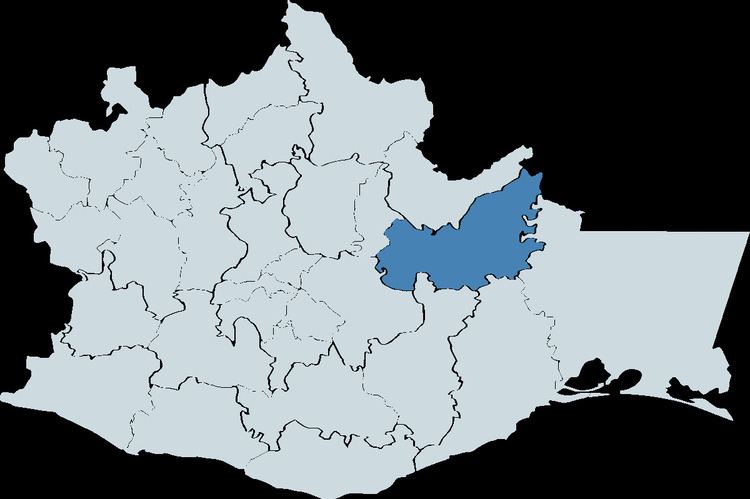Glottolog: oaxa1241 | ||
 | ||
Linguistic classification: Mixe–ZoqueanMixeanMixe Subdivisions: TotontepecTlahuitoltepecMidland (Central)Isthmus (Lowland)Ulterior Mixe | ||
The Mixe languages are languages of the Mixean branch of the Mixe–Zoquean language family indigenous to southern Mexico. According to a 1995 classification, there are seven of them (including one that is extinct). The four that are spoken in Oaxaca are commonly called Mixe while their two relatives spoken in Veracruz are commonly called "Popoluca", but sometimes also Mixe (these are "Oluta Popoluca" or "Olutec Mixe" and "Sayula Popoluca" or "Sayultec Mixe"). This article is about the Oaxaca Mixe languages, which their speakers call Ayuujk, Ayüük or Ayuhk.
Contents
133,000 people reported their language to be "Mixe" in the 2010 census. A few thousand of the 41,000 who reported their language to be "Popoluca" are presumably Sayula Popoluca (Mixe).
Classification
Oaxaca Mixe languages are spoken in the Sierra Mixe of eastern Oaxaca. These four languages are: North Highland Mixe, spoken around Totontepec (the most divergent); South Highland Mixe, spoken around Santa María Tlahuitoltepec, Ayutla and Tamazulapan); Midland Mixe, spoken around Juquila and Zacatepec; and Lowland Mixe, spoken in San Juan Guichicovi (this language is also known as "Isthmus Mixe").
The following classification is from Wichmann (1995:9).
Wichmann (2008) adds Ulterior Mixe as an additional branch:
Phonology
Mixe phonology is complicated and little documented. There is a palatalized series of all consonant phonemes (as in Russian, Polish, or Gaelic) and possibly a fortis/lenis distinction in the stop series, the recognition of which however is obscured by a tendency of allophonic voicing of consonants in voiced environments. Syllable nuclei are notoriously complex in Mixe, varying in length and phonation. Most descriptions report three contrastive vowel lengths. There are multiple values of phonation, one being the typical one (what some phoneticians call "modal voicing"). The other types of phonation have been variously termed checked vowels, creaky voice vowels and breathy voice vowels. Some Mixe variants are vowel innovative and some, notably North Highland Mixe, have complicated umlaut systems raising vowel qualities in certain phonological environments.
Verbs
The morphosyntactic alignment of Mixe is ergative and it also has an obviative system which serves to distinguish between verb participants in reference to its direct–inverse system. The Mixe verb is complex and inflects for many categories and also shows a lot of derivational morphology. One of the parameters of verb inflection is whether a verb occurs in an independent or dependent clause; this distinction is marked by both differential affixation and stem ablaut. Unlike Sayultec Mixe (spoken in the neighboring state of Veracruz), Mixe languages of Oaxaca only mark one argument on the verb: either the object or the subject of the verb depending on whether the verb is in the direct or inverse form. Mixe shows a wide variety of possibilities for noun incorporation.
Nouns
The Mixe noun does not normally inflect, except that human nouns inflect for plural. Noun compounding is a very productive process, and the profuse derivational morphology allows for creation of new nouns both from verbs and from other nouns.
Syntax
Mixe languages are have SOV constituent order, prepositions and genitives precede the noun. But relative clauses follow the noun.
Text example of Mixe
The example below is from Lowland Mixe.
Radio
Mixe-language programming is carried by the CDI's radio station XEGLO, based in Guelatao de Juárez, Oaxaca.
